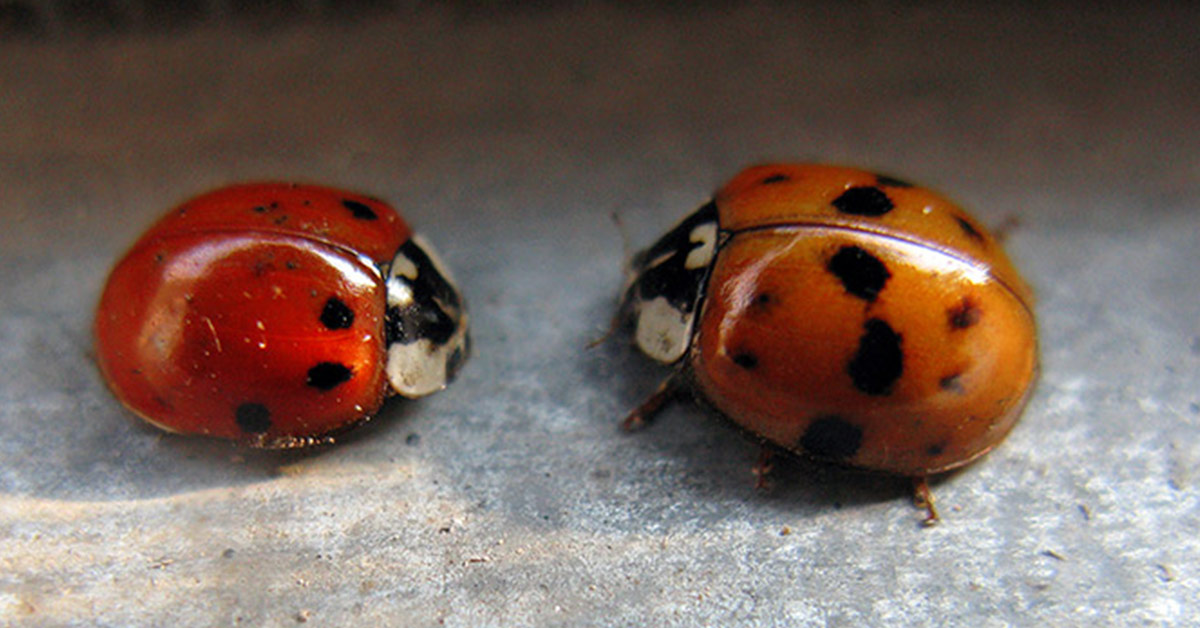Lady bugs – they’re delicate, beautiful, bright red spotted insects, and are arguably one of the cutest. Every year, you may notice that ladybugs seems to be covering everything. (Despite their being everywhere, it’s quite a pretty sight to behold.) Lately, however, these supposed ladybugs have appeared in large numbers at a rather strange time. So strange, in fact, that Texas Parks and Wildlife posted on their Facebook page. They’re actually Asian Lady Beetles.
“Are you seeing lots of Ladybugs? Those may actually be Asian Lady Beetles, a non-native species introduced for pest control. They tend to congregate around buildings in the late fall, looking for a place to spend the winter.”
Now that spring is here and these Asian Lady Beetles are coming out of hibernation, some people are finding the sheer number of them hard to handle as they become more active.
The Difference Between Ladybugs and Asian Lady Beetles
Part of the reason why people are so tolerant of ladybugs is that, for the most part, they feed on plant pests and live outside. Asian Lady Beetles tend to infest homes and buildings, which is a trend that people began taking notice of in the early 1990s.
These insects originally come from countries in Asia such as China, Korea, and Japan. In 1998, the United States Department of Agriculture released the first population of this type of beetle to help protect fields and crops from other agricultural pests that would harm crops (e.g., pecans and apples).
Despite releasing large numbers of these insects into South Carolina, Louisiana, Georgia, Mississippi, Pennsylvania, Connecticut, California, Maryland, and Washington, scientists are not convinced that this caused the current North American infestation. Rather, they claim that a number of beetles came into New Orleans, accidentally, by way of a Japanese freighter.[1]
Catherine Song from The Spruce captures their differences perfectly in the illustration below.
What Are the Asian Lady Beetles’ Impact on Humans?
Other than being a nuisance, thankfully there aren’t many! Unlike ticks and the risk of Lyme disease, these insects likely won’t injure humans. According to Entomology, Asian Lady Beetles release a yellowish fluid and odor which they use as a defense mechanism to fend off birds and other predators.[1]
Worst case scenario, some studies suggest that Asian Lady Beetle infestations can cause allergy symptoms (e.g., irritated eyes and asthma). And, while they can bite, it might feel like a pinprick but is more often than not nothing to worry about.[2]
How to Get Rid of Asian Lady Beetles from Your Home
You’ve got some options – and they’re chemical-free, too!
- Seal off cracks and openings around your house! Doing this is arguably the best long-term solution for keeping these beetles out.
- Use a vacuum! One the Asian Lady Beetles are in your home, it’s your rules. You can use a broom and sweep them away, but this may result in that off-putting odor and yellowish secretion on your walls, ceiling, or floor. Once you’ve vacuumed them up, cover the hose opening with a cloth or paper towel before disposing of them into the garbage and away from your home.
- Create a peppermint oil spray! The overpowering scent of this homemade peppermint “bug bomb” will help to repel the Asian Lady Beetles. What also makes this alternative so great is that it’s pet-friendly and can even prevent fleas from latching onto your dog.
Although these Asian Lady Beetles are much worse than ladybugs when it comes to overpopulation and infestation, the good thing is that they can’t really harm your health! So, as long as you’re using any of those tips above, chances are those beetles will be out of your house in no time.
Keep Reading: The Surprising Reasons Why Mosquitoes Bite Some People and Don’t Touch Others
Sources
- Asian Lady Beetle Infestation of Structures. (n.d.). Retrieved April 13, 2018, from Entomology

